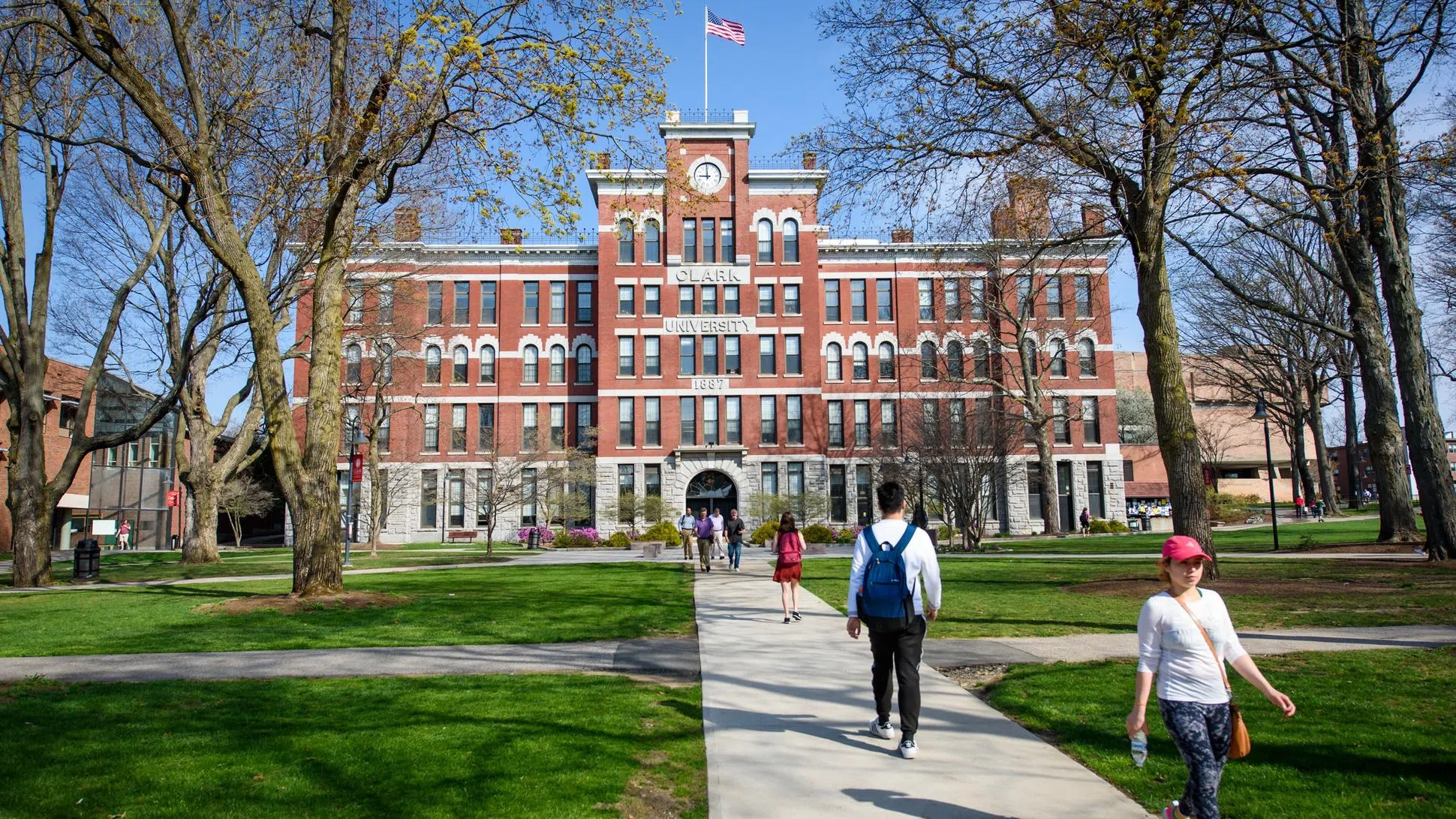Media Gallery
Clark History
🏫 Clark History
Clark's founding, important figures, and legacy of innovation.
Our Founding
Clark University was founded in 1887 by Jonas Gilman Clark. An international furniture merchant, carriage-maker, tinsmith, and entrepreneur, Jonas Clark was a lifelong learner. He was contemporaries with Leland Stanford, the founder of Stanford University, and he and his wife took several trips to Europe to observe emerging trends in higher education.
A central Massachusetts native, Jonas Clark returned to Worcester toward the end of his career. He founded Clark University to test out new ideas in higher education and to give back to the city of Worcester. When Clark was founded, it was one of the first all-graduate institutions in the country; our research expertise was in the burgeoning field of psychology.
A central Massachusetts native, Jonas Clark returned to Worcester toward the end of his career. He founded Clark University to test out new ideas in higher education and to give back to the city of Worcester. When Clark was founded, it was one of the first all-graduate institutions in the country; our research expertise was in the burgeoning field of psychology.
1909 Clark Lectures
Outside of Jonas Clark Hall sits a statue of Sigmund Freud. Beyond Clark's legacy of psychology research, the statue commemorates Freud's visit to Clark in 1909, when he lectured on his theories of psychoanalysis at the University's 20th Anniversary Celebration. Clark University is the only place in the United States where Sigmund Freud ever gave a lecture.
Today, the Freud statue is the most photographed spot on campus. Clarkies even like to give Freud some flair, adding hats, balloons, and other attire to the statue for special occasions.
Today, the Freud statue is the most photographed spot on campus. Clarkies even like to give Freud some flair, adding hats, balloons, and other attire to the statue for special occasions.
Clark "Firsts"
Clark University has a rich legacy of invention and innovation. Our faculty helped invent the birth control pill, coined the wind chill factor, and invented modern rocketry. You even have a Clarkie to thank for the Panera bread bowl.
When founded in 1887, Clark University was one of the first all-graduate institutions in the United States. Here arethree other Clark "firsts":
- In 1907, former Clark physics professor Albert Michelson became the first American to win a Nobel Prize in the sciences. He invented the interferometer, which measures the length and velocity of light.
- In 1920, Francis Sumner became the first Black man to earn a PhD in psychology, completing his dissertation at Clark. His paper is titled "Psychoanalysis of Freud and Adler," and he became known as "the Father of Black Psychology."
- The first book to go to the moon, Robert Goddard's autobiography, is in our archives. Buzz Aldrin carried it with him on his 1969 lunar voyage and donated it to Goddard Library.
When founded in 1887, Clark University was one of the first all-graduate institutions in the United States. Here arethree other Clark "firsts":
- In 1907, former Clark physics professor Albert Michelson became the first American to win a Nobel Prize in the sciences. He invented the interferometer, which measures the length and velocity of light.
- In 1920, Francis Sumner became the first Black man to earn a PhD in psychology, completing his dissertation at Clark. His paper is titled "Psychoanalysis of Freud and Adler," and he became known as "the Father of Black Psychology."
- The first book to go to the moon, Robert Goddard's autobiography, is in our archives. Buzz Aldrin carried it with him on his 1969 lunar voyage and donated it to Goddard Library.


